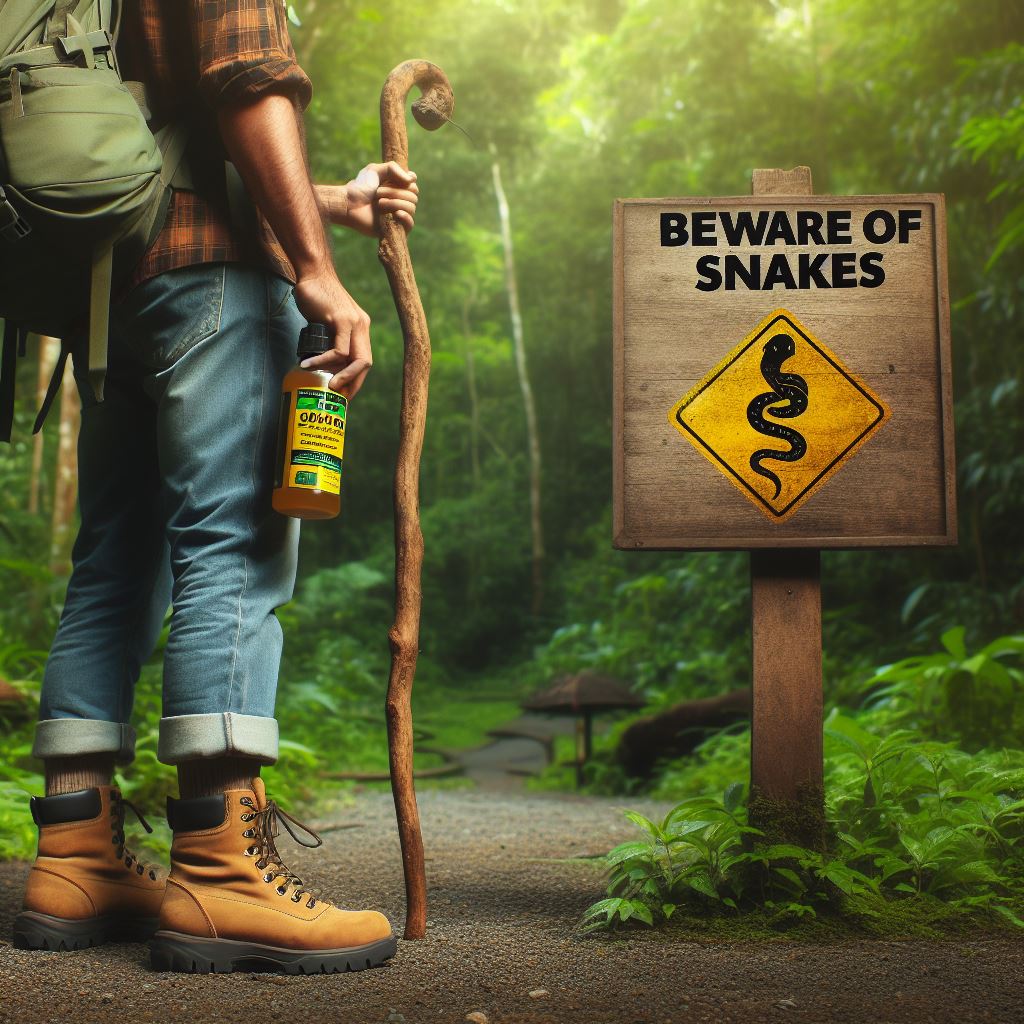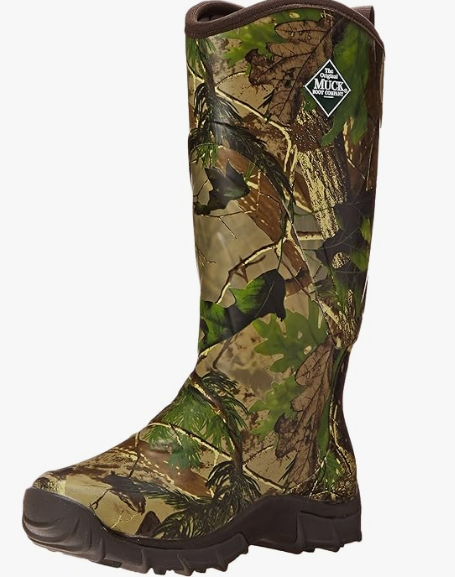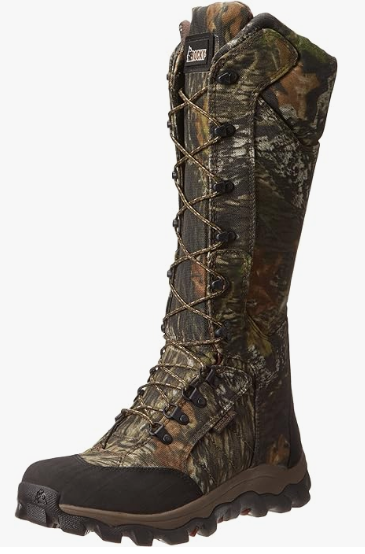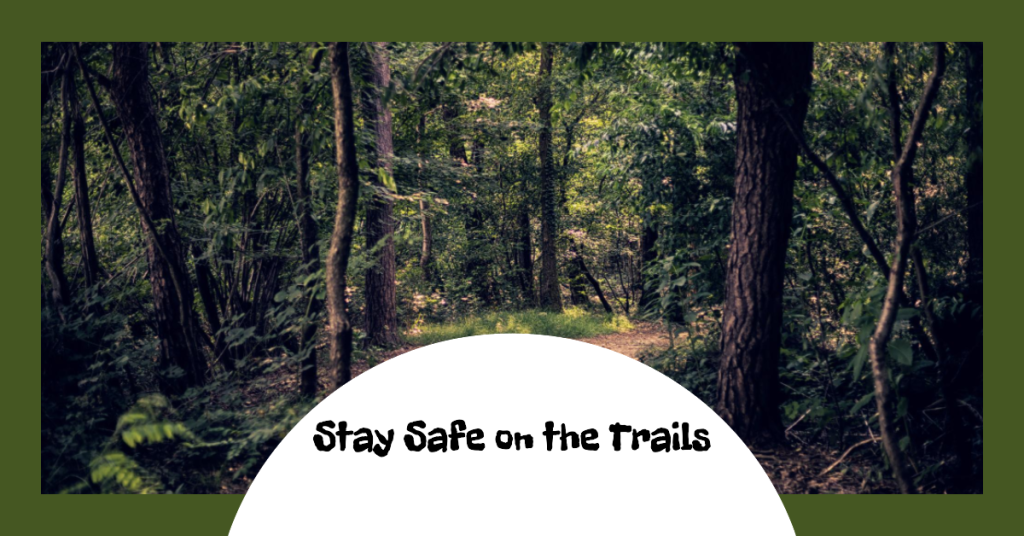Enjoying the great outdoors on a hiking adventure can make for an exciting day. However, an unfortunate reality exists that you may encounter one of nature’s more dangerous animals along the trail – venomous snakes.
While the majority of snakes pose no threat, coming in contact with one of the six dangerous native species in North America – rattlesnakes, copperheads, cottonmouths, coral snakes, and relatives – can lead to an extremely painful, damaging and possibly deadly bite if proper precautions are not taken.
This comprehensive guide will provide helpful tips tailored to hikers for avoiding snake bites specific to the type of terrain, climate, and snake behaviors depending on your region. We’ll also cover proper identification of venomous species, best practices if you spot a snake, and what to do in case of an unfortunate bite while waiting for medical care.
Let’s explore smart preparations to help ensure your outdoor hike remains fun and free of unwelcome serpent surprises lurking among the natural beauty.
Types of Venomous Snakes by Region in North America

The first step involves educating yourself on the native venomous snake species potentially residing in the areas you plan to hike based on geography and climate:
Rattlesnakes
- Locations: Throughout the continental United States into Canada and Mexico
- Description: Thick, triangular head with a signature rattle at end of the tail; camouflage patterns in rocks, soil
- Behaviors: Coil and rattle tail as a warning; strike if provoked
Copperheads
- Locations: Mainly eastern half of US; high elevation mountain forests
- Description: Tan, coppery-brown hourglass bands across back/sides; camouflage well in leaf litter
- Behaviors: Freeze in place if spotted; fast strikers at close range
Cottonmouths
- Locations: Southeastern US wetlands and rivers
- Description: Variable dark brown patterns; white mouth interior
- Behaviors: Mostly flee if spotted; will stand ground if cornered
Coral Snakes
- Locations: South central US through southeast coastal states
- Description: Bright characteristic red, yellow, and black banding
- Behaviors: Mild temperament; bite only as a last resort
Hiking Habits Increasing Your Risk of Snake Bites
Irish Setter Vaprtrek Snake Boot

- 17” height for full coverage
Moisture-wicking antimicrobial lining
Superior traction and ankle support
The chance of crossing paths with one of these venomous snakes varies tremendously based on the location, terrain, and climate where you adventure. But regardless of specific species, following smart hiking protocols greatly reduces potential incidents.
Here are habits putting you at higher risk of snake bites:
- Hiking off designated trails into heavy brush and high grasses
- Stepping over fallen logs or rocks without inspecting underneath first
- Sitting on the ground without checking the area thoroughly beforehand
- Allowing your dog off-leash to roam and investigate scent trails
- Being unable to hear warning rattles due to headphones or chatting loudly in groups
- Continuing hiking as sunlight fades reducing visibility
Conversely, a few basic precautions for making smart adjustments to your hiking habits significantly decrease the likelihood of snake encounters:
Stay on Established Trails
Well-maintained trails keep dense vegetation cleared back minimizing spots for snakes to hide and ambush prey. Staying on marked paths also funnels noise and vibrations giving snakes early warning to slither away as you approach.
Carry & Use a Hiking Stick
A sturdy stick serves double duty on trails as a third point improving steep descent balance and a handy tool for moving brush debris before stepping through and investigating rest breaks before plopping down. Extra vibration created by raking the stick through grass alerts snakes long before reaching striking distance as well.
Wear Proper Footwear
Sturdy hiking boots with at least 8 to 10-inch high tops protect feet and ankles far better than running shoes if accidentally stepping near a snake. Waterproof leather or tightly woven mesh tops minimize the chance of fangs penetrating through to your skin should a snake still strike defensively.
The infographic below summarizes smart hiking habits that reduce your odds of encountering a venomous snake:
Smart Hiking Habits to Avoid Snake Bites
| Habit | Reasoning |
|---|---|
| Hike with a partner or group | More sets of eyes spot snakes; noise deters snakes |
| Leave headphones off | Use snake gaiters if high-risk terrain |
| Avoid reaching into hollow logs or under rocks | Potential snake shelter spots |
| Keep dogs leashed or leave at home | Curious noses lead to defensive bites |
| Step ON logs, not over them | Attacks strike upwards |
| Use snake gaiters if high risk terrain | Protects lower legs/feet |
Know Your Snake Species
In the event you do spot a snake, proper identification means the difference between admiring its beauty and needing to exit the situation. Depending on your location, utilize a snake identification guide specific to venomous species in your region:
East Coast
West Coast
Preventing Snake Bites on the Trail
Chippewa Waterproof 17” Lace Pull-On Snake Boots

- Lace-up style with side zip closure
- Waterproof full-grain leather/Cordura nylon upper
- Breathable Dri-Lex lining
- Lightweight Vibram outsole
- Polartec 100g Thinsulate insulation
While knowledge and alert hiking habits minimize risk, a few preparedness items also prove useful if your route contains higher snake population areas:
Appropriate Clothing
- Hiking pants and long-sleeved shirts keep more skin protected
- Snake gaiters slipping over ankles/calves provide an extra biting barrier
Repellents
- Natural snake oils like sulfur repel based on unpleasant smells
- Widely-available commercial chemical options offer more effectiveness
First Aid Equipment
- Compact venom extractor kits allow suctioning dangerous fluids
- Medical responders advise against tourniquets or incisions
- Carry antihistamines to counteract venom allergic reactions
Emergency Communications
- Mobile phones fully charged to contact emergency services
- Survival whistles useful when beyond cell signal range
Trekking Poles
- Probe brush and provide stability similar to hiking sticks
- Models incorporating mirrors help see around blind turns
Leashed Dogs
- Prevents curious pups from disturbing hidden dangers
- Allows controlling and removing them from threats
What To Do If You Encounter a Snake
Despite your best efforts, you still may end up sharing a section of trail with a venomous snake at some point. If this tense scenario unfolds, follow this smart protocol:
Step 1: Stop and Remain Calm
Panicking increases the odds you or your hiking partner inadvertently stumble within striking distance. Freeze and gather your thoughts on the best way to exit.
Step 2: Analyze the Situation
Without making sudden moves, carefully observe the snake’s size, markings, and behavior to identify species and level of defensiveness.
Aggressively rattling tails or loudly hissing conveys an imminent willingness to bite. Alternatively, snakes stealthily slithering away signal harmless passing interest.
Step 3: Slowly Create Distance
If the snake exhibits aggressive posturing, calmly widen the circumference without turning your back or running. Most snake bites happen as people flee carelessly within proximity. Non-threatening snakes are also best avoided by conservative retreat.
Step 4: Notify Park Rangers
Once safely distant, contact park staff especially if spotting venomous species near common trails. Rangers authorize proper snake removal ensuring hiker safety.
Step 5: Learn From the Encounter
Reflect on conditions leading to crossing paths. Were you hiking off-trail or through dense brush? Was the terrain rocky and difficult to scan thoroughly? These insights guide wiser decisions going forward.
By training yourself to remain composed and back away conservatively, close calls with snakes ultimately become harmless yet exhilarating nature encounters.
Administering First Aid for Snake Bites
MuckBoots Pursuit Snake Boot

- Stretch-fit contours to leg for flexibility
- Aggressive outsole pattern for traction
- Excellent protection from water and Snake bites
If a bite occurs, swift action greatly minimizes health impacts:
Step 1: Remain Calm and immobilize Bitten Limb
Panic accelerates circulation pumping venom so a conscious effort to relax reduces the spread rate. The immobilizing position also limits muscular contraction and blood flow.
Step 2: Clean Bite & Cover With Bandage
Wipe away excess venom then cover fang marks with a clean bandage to avoid further contamination. Do NOT make any incisions attempting to bleed out venom.
Step 3: Contact Emergency Services
Phone emergency responders to relay medical situation and location. Answer questions about snake appearance to assist hospitals in preparing anti-venom treatment ahead of arrival.
Step 4: Monitor Breathing & Heart Rate
While waiting for help, closely monitor vital signs for changes signaling dangerous toxicity and allergic reactions. Keep the victim warm and calm emphasizing relief is route.
Do NOT Use Tourniquets or Venom Kits
Constricting bands and suction devices cause more tissue damage relative to anti-venom effects and should only be attempted by medical professionals.
Are Certain Seasons Worse for Snake Encounters?
As cold-blooded creatures, snakes depend on warmth from the environment to regulate body temperature allowing necessary metabolic functions. Extended freezing or below 40°F/4°C temperatures force snakes to hibernate underground preserving energy through winter.
Consequently, snake activity and bite incidence peak during seasonal shifts bringing them toward the surface seeking food coming out of dormancy in early Spring or retreating toward hibernacula hiding spots in late Fall.
While snakes reside year-round through most regions of North America, Spring through Fall represents prime times for cautious awareness. Warmer weather patterns extending their active seasons due to climate change also factor into more numerous snake encounters across the country in recent decades.
What Times of Day Do Snakes Attack?
Rocky ProHunter Snake Boots

- Leather/nylon upper with snakeguard lining
- Flexible rubber/EVA outsole
- 4-way stretch nylon cuff
- Waterproof and scent-free materials
- Minimum insulation to stay cool
Another behavioral factor involves daily cycles. Being coldblooded, snakes typically remain hidden emerging only when temperatures allow efficient functioning to hunt and mate.
Early mornings often prove too cool while the midday sun makes staying exposed dangerous against overheating without access to shade or burrows. Instead, snakes concentrate activities at:
- Dawn – Sunrise warming snakes to initiate movement
- Dusk – Cooler temperatures signaling prime hunting time
Limiting hikes to high noon hours greatly reduces the likelihood of bites – just be sure to pack extra water offset sweating! Late afternoons also prove safer as snakes finishing hunting return to shelters before temperatures drop substantially at night.
Where Should You Avoid Hiking?
While we never want to discourage adventuring outdoors, certain landscapes contain inherent risks regarding potential snake habitats that warrant thoughtful precautions:
Rocky Areas
Baskers like rattlesnakes favor rocky outcroppings to absorb warming sun rays opening crevices to retreat from extreme heat. Always visually scan antes stepping over boulders.
Wooded Foothills
Rodent-rich woods surrounding mountains offer ambush points for copperheads and cottonmouths hidden among leaf litter awaiting food. Kick debris piles first before bushwhacking through them.
Desert Plains
Sparse vegetation means prey, as well as predators, traverse open ground more frequently. Scan holes vigilantly when traversing prairie lands.
Marshlands
Abundant amphibian life draws copperheads and cottonmouths toward moist areas. Use trekking poles testing soil firmness crossing muddy areas.
While snakes inhabit almost every geography, minding these extra hazardous terrains goes a long way keeping serpents literally out of your boots.
Alternative Hiking Destinations With Lower Snake Populations
If snake concerns discourage your enjoyment on trails, consider instead visiting regions where venomous species remain relatively rare such as:
Northeastern States
Outside of timber rattlesnake pockets hugging Appalachian slopes, states like Maine, New York, and others in New England offer abundant hiking with extremely low snake densities.
West Coast Beaches
Coastlines along the Pacific Ocean typically lack significant snake habitat due to brisk winds and a lack of diverse vegetation beyond shore vegetation. Just watch tidal zone markings!
High Mountain Peaks
Alpine and sub-alpine zones reaching above tree lines feature extreme weather and lack of prey unable to sustain snake colonies. Just ensure proper cold weather gear for extended jaunts.
Desert Sand Dunes
Wind-sculpted sandscapes found in California and New Mexico wilderness areas offer harsh terrain avoiding snakes. Beware of sun exposure in these extremely arid environments, however.
Responsible Hiking Habits Regarding Snakes
While smart preparation and identification guidelines help lower risk, embracing responsibility toward all wildlife promotes ongoing biodiversity as well:
- Admire snakes from afar versus approaching closely or attempting handling – even “dead” specimens may merely appear inert until threatened.
- Note sightings on citizen science sites like HerpMapper or submitting observations to park rangers aids tracking distribution.
- Recognizing venomous snakes helps control disease-carrying rodents and pests. Their unique niche in nature deserves respect rather than irrational fears.
- Leashing dogs prevent them from harassing other wildlife plus possible defensive bites toward pets mistaken as threats.
Equipped with helpful knowledge of snake behaviors and habits in the regions you hike, you can continue enjoying the outdoors with greater awareness and preparations avoiding negative encounters. Always hike smart and tread lightly!

More Stories
Boot Straps for Cowboy Boots: Elevating Style and Functionality
Best Boots for Pheasant Hunting in 2024
All The Essential Hunting Equipment